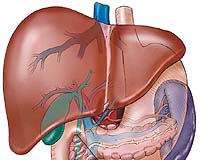
Okay, after your liver has made cholesterol and fatty acids, it packages them with protein as very low-density lipoproteins (VLDLs), which have more protein and are denser than their precursors, the chylomicrons. As VLDLs travel through your bloodstream, they lose triglycerides, pick up cholesterol, and turn into low-density lipoproteins (LDLs). LDLs supply cholesterol to your body cells, which use it to make new cell membranes and manufacture sterol compounds such as hormones. That’s the good news. The bad news is that both VLDLs and LDLs are soft and squishy enough to pass through blood vessel walls. The larger and squishier they are, the more likely they are to slide into your arteries, which means that VLDLs are more hazardous to your health than plain old LDLs. These fluffy, fatty lipoproteins carry cholesterol into blood vessels, where it can cling to the inside wall, forming deposits, or plaques. These plaques may eventually block an artery, prevent blood from flowing through, and trigger a heart attack or stroke. Whew! Got all that?
VLDLs and LDLs are sometimes called “bad cholesterol,” but this characterization is a misnomer. They aren’t cholesterol; they’re just the rafts on which cholesterol sails into your arteries. Traveling through the body, LDLs continue to lose cholesterol. In the end, they lose so much fat that they become mostly protein — turning them into high-density lipoproteins, the particles sometimes called “good cholesterol.” Once again, this label is inaccurate. HDLs aren’t cholesterol: They’re simply protein and fat particles too dense and compact to pass through blood vessel walls, so they carry cholesterol out of the body rather than into arteries.
That’s why a high level of HDLs may reduce your risk of heart attack regardless of your total cholesterol levels. Conversely, a high level of LDLs may raise your risk of heart attack, even if your overall cholesterol level is low. Hey, on second thought, maybe that does qualify them as “good” and “bad” cholesterol.

No comments:
Post a Comment